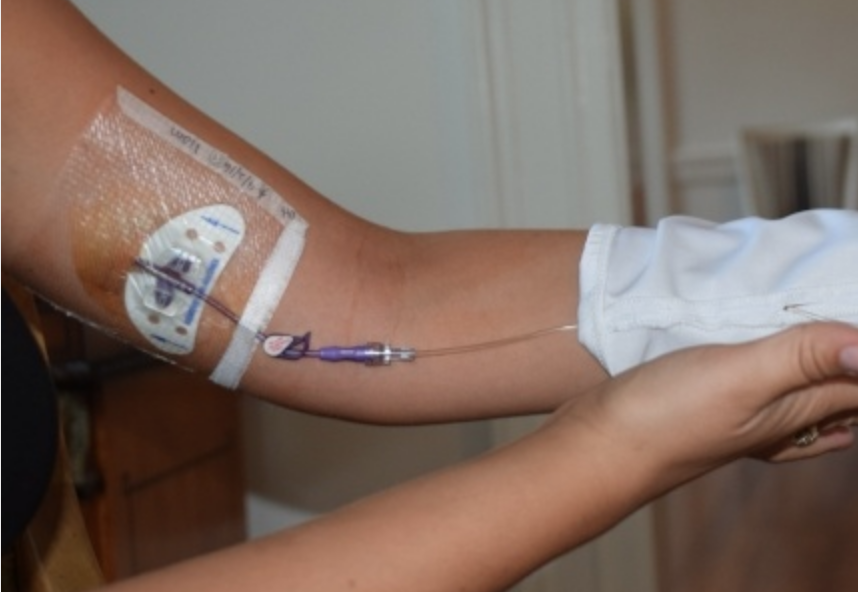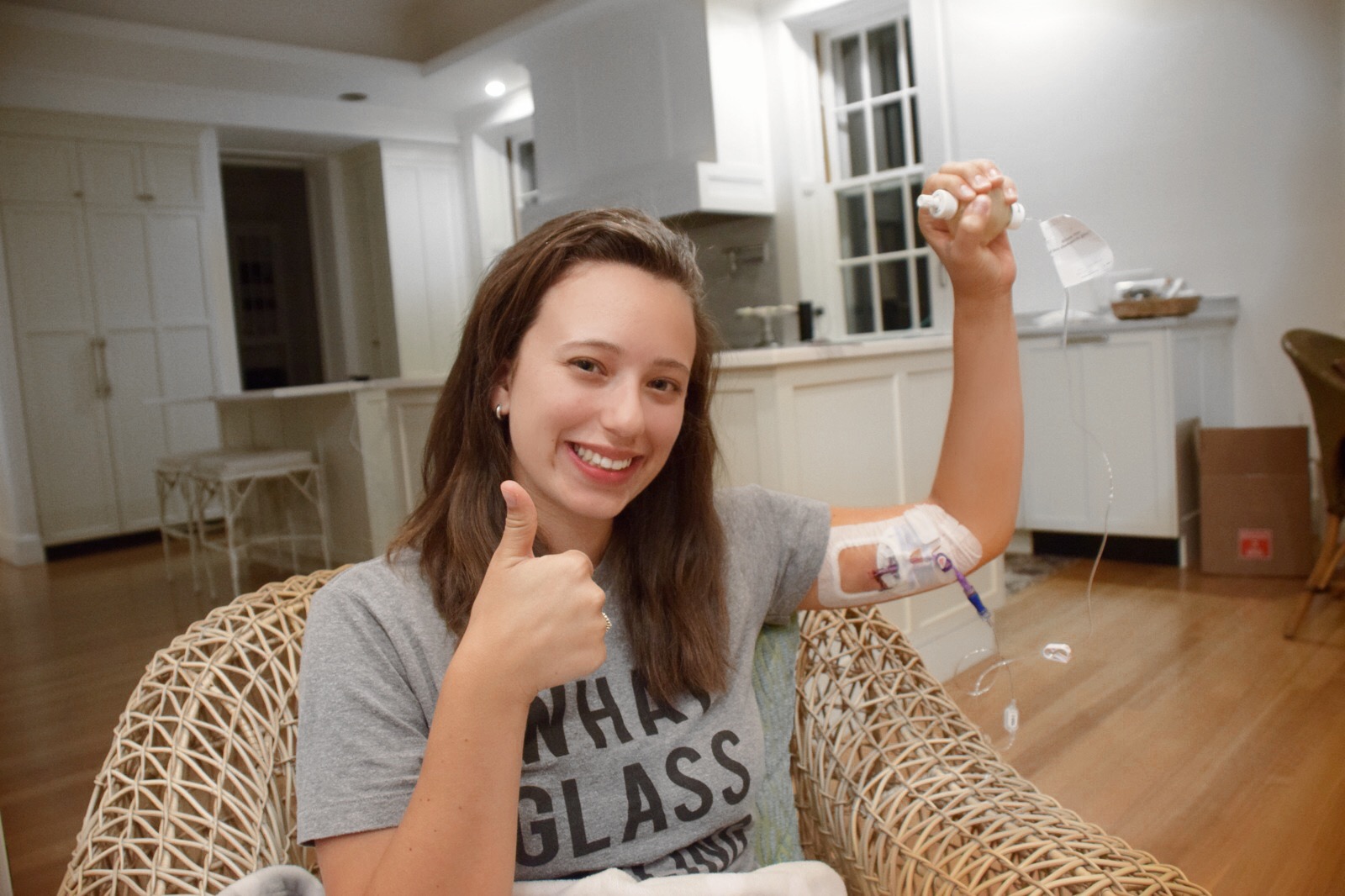In the days after I first got my PICC Line inserted, I was obsessed with making sure it was clean and free from infection. Though we had regularly scheduled visits from home nurses, my Dad and I made it our mission to learn how to complete a PICC Line dressing change so that no matter what happened, we would be able to keep the site clean, secure, and protected.
Those first few days were scary and I was so grateful to my dad for taking the time to understand this process. I quickly learned that together, we could complete a dressing change like pros.
Here at Mighty Well, we want to share our knowledge to help you in your PICC line journey! Below are some answers to a few common questions about how to manage a PICC line dressing change.
What is a PICC line dressing change?
A PICC line dressing is a bandage that is placed over your PICC line to protect the insertion area from germs and other bacteria. To best protect your PICC line, you will need to implement routine dressing changes. This simply means you will need to replace your current PICC line dressing with a new, fresh bandage.
Who can administer a PICC line dressing change?
You can complete a PICC line dressing change at home, but don’t do so alone! A dressing change should be a sterile process and sterile techniques should be applied. A caregiver, family member, or home nurse should help you with your dressing change to maintain a sterile environment throughout the process.
How often should I change my PICC line dressing?
Check your PICC line dressing every day and change it about once a week. If you notice that the edges of your dressing are pulling off the skin, that means it’s time for a change. This likely will happen about once a week, but if your dressing gets dirty or wet, you may need to change your dressing earlier than expected.
Check out our tips on caring for your PICC line here!

How should I prepare for a dressing change?
Get clean! Before you start the process, clean the surface on which you will be conducting your PICC line dressing change. You can use a household cleaner and then let that surface air dry. Wash your hands with soap and water. Once you’re ready, open up the sterile dressing kit and place it within reach on your cleaned surface.
How do I complete a PICC line dressing change at home?
Patient Education at OSUMC.edu has a great checklist that walks you through the process for this. We recommend you check out their step-by-step PICC Line Dressing guide (with illustrations!) to walk you through the details of your dressing change, but here is my general overview.
- Put on sterile gloves
- Remove the outer PICC Line dressing (if it’s sticky, use adhesive remover wipes to help get rid of the stickiness and prevent you from pulling on the catheter).
- As you remove the dressing (pull up the arm towards the shoulder) make sure you hold the catheter in place with your sterile gloves and a gauze pad.
- Once the outer dressing is removed, always check the length of the PICC catheter from where it exits your skin to its tip with each dressing change. The length should be the same as when it was placed. Remember, if your PICC comes out during the dressing change process, do not push it back in! This is when it’s time to call your doctor and speak to them about the next steps.
- Once the dressing is off, clean the area using the tools in your dressing change kit including skin prep pads and alcohol prep pads.
- You should clean the skin around the insertion site and the catheter each for at least 30 seconds. Do not blow on the site to help it dry. You should let it air dry!
- Place your anchor device and apply a new gauze dressing and outer cover.
Final Touches
When I worked with my dad on this, I always wanted him to keep the gauze, tape, and dressing as clean and neat looking as possible. I felt more secure when I could see less of the insertion site, and when the tape was placed cleanly, and orderly. This might just be a personal touch, but make sure you’re happy with the final result of your dressing change before you finish up.
Don’t forget your PICCPerfect PICC Line cover!
Once the process is complete, choose your favorite PICCPerfect PICC Line cover to keep you feeling secure and stylish until your next dressing change.

